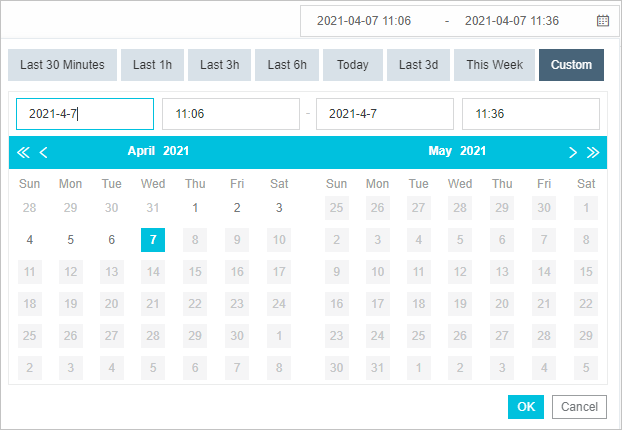On the Database Calls page, you can view the number of SQL calls, the average time consumption, and related traces for each SQL statement. This helps you locate SQL performance issues.
View SQL analysis results
To view SQL statistics and analysis results, perform the following steps.
- Log on to the ARMS console. In the left-side navigation pane, choose .
- On the Applications page, select a region in the top navigation bar and click the name of the application that you want to manage. If the
 icon is displayed in the Language column, the application is connected to Application Monitoring. If a hyphen (-) is displayed, the application is connected to Tracing Analysis.
icon is displayed in the Language column, the application is connected to Application Monitoring. If a hyphen (-) is displayed, the application is connected to Tracing Analysis. - In the left-side navigation pane, click Database Calls. On the SQL Analysis tab, view the following metrics:
- The number of times that SQL statements are called per minute and the chart of the average response time for the calls within the specified period of time
- The number of times that a specific SQL statement is called and the average response time for the calls within the specified period of time
- On the SQL Analysis tab, perform the following steps based on your requirements:
- Click Call Statistics in the Actions column. The number of times that the SQL statement is called per minute and the chart of the average response time for the calls within the specified period of time are displayed.
- Click Trace Query in the Actions column. All the traces that are related to the SQL statement are displayed on the Traces tab.
Specify a time range
You can select a predefined time range or specify a custom time range.
- In the upper-right corner of the page, click the date and time picker and select a predefined time range, such as Last 30 Minutes, Today, or This Week.
- If no predefined time ranges meet your business requirements, select Custom. Select a start time and an end time in the calendar or enter a start time and an end time, and then click OK. The date format is
YYYY-MM-DDand the time format isHH:MM.




















